Intraoperative Nursing: Roles and Responsibilities for Patient Safety
VerifiedAdded on 2021/05/31
|7
|773
|868
Report
AI Summary
This report provides a detailed overview of intraoperative nursing care, focusing on the roles and responsibilities of three key operating room nurses: the anesthetist, the scrub nurse, and the circulating nurse. The report defines the intraoperative period and explains the responsibilities of each nurse in maintaining patient safety, maintaining an aseptic environment, ensuring correct instrument counts, and proper patient positioning. The anesthetist's role includes anesthesia induction and patient assessment. The scrub nurse prepares the surgical setup and assists the surgeon. The circulating nurse manages the operating room and monitors the patient's vital signs and aseptic techniques. The report concludes by emphasizing the importance of safety protocols such as proper patient positioning and the application of safety devices. References from nursing journals are included to support the information provided.
1 out of 7
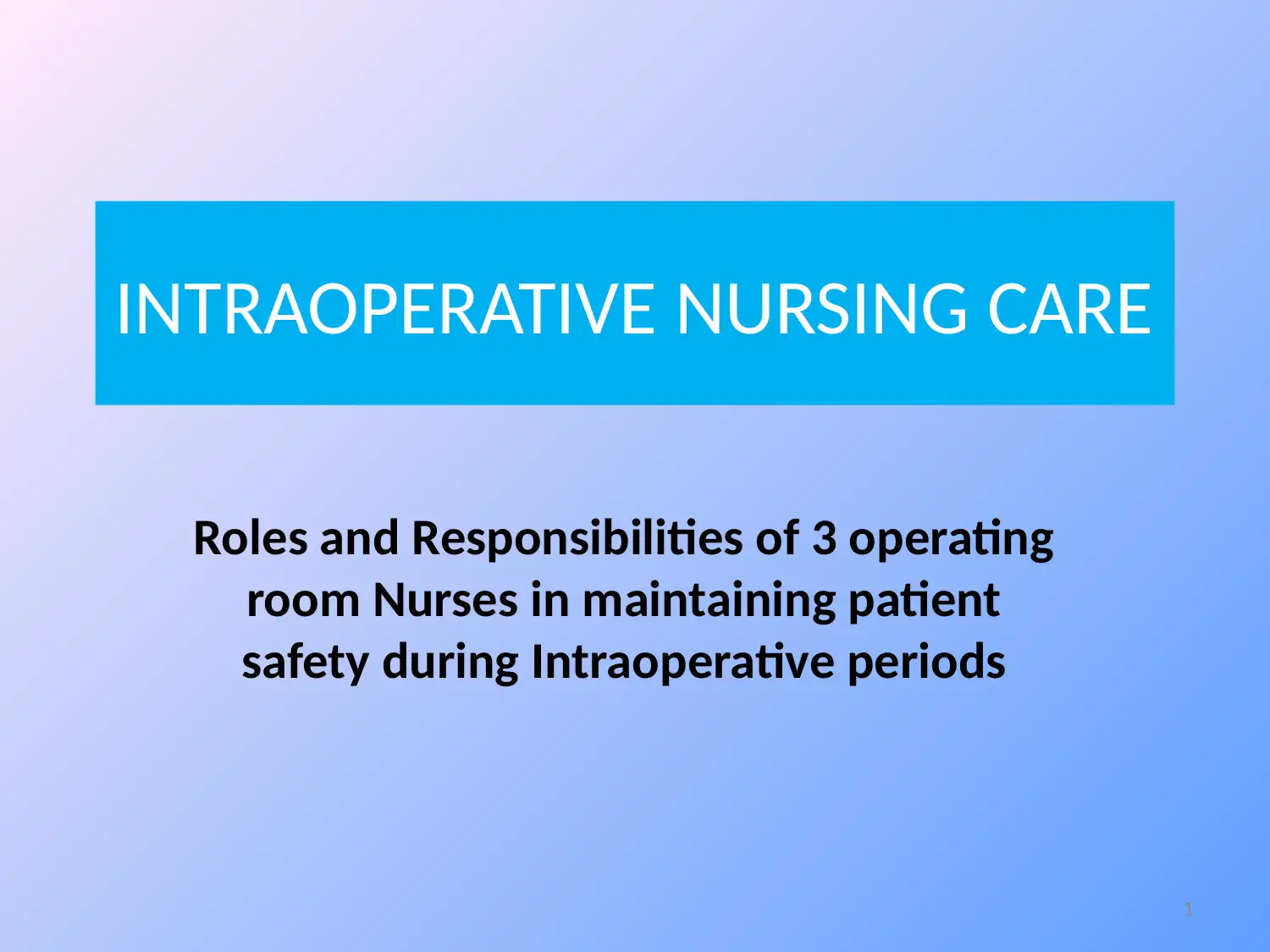

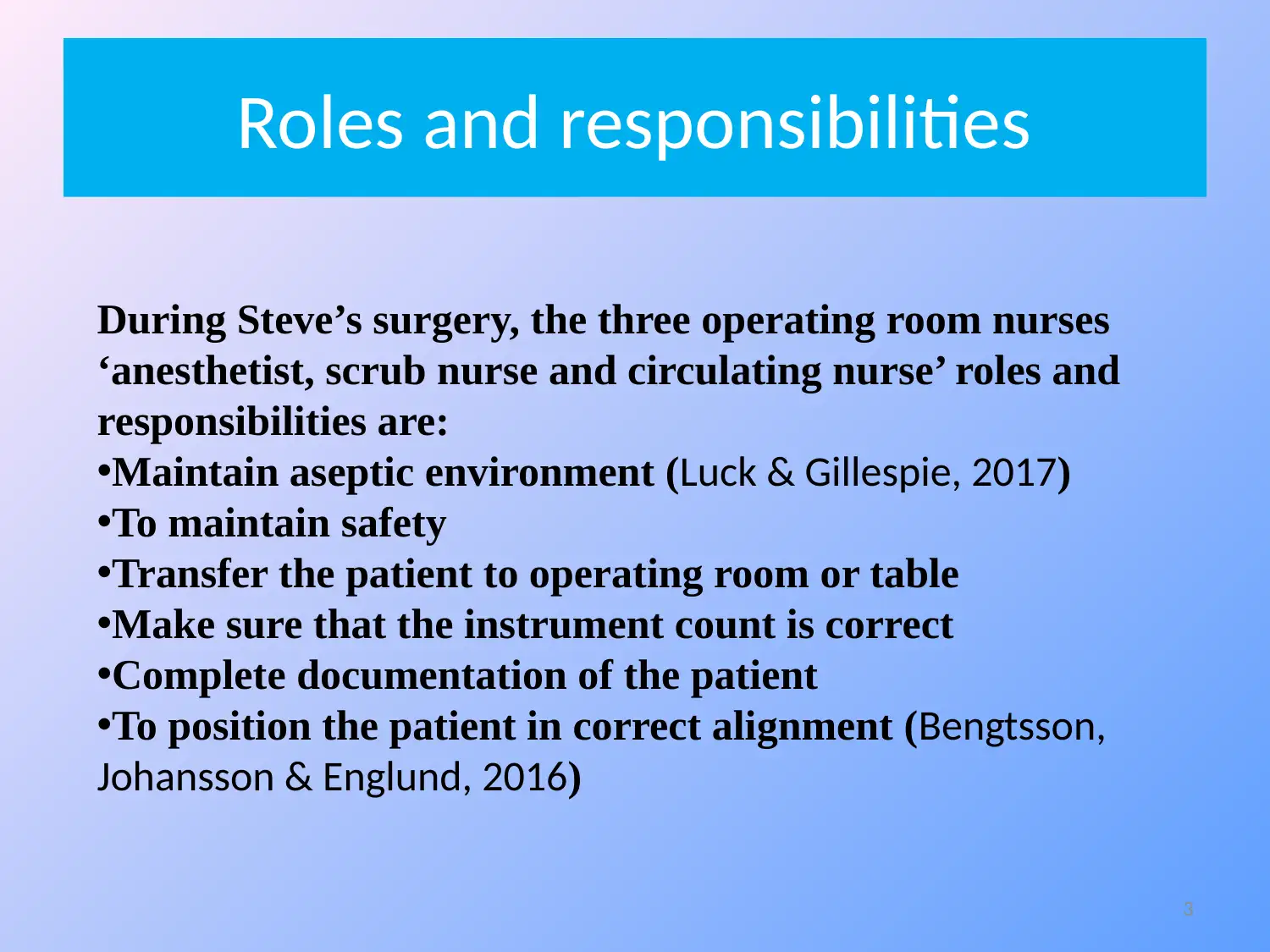


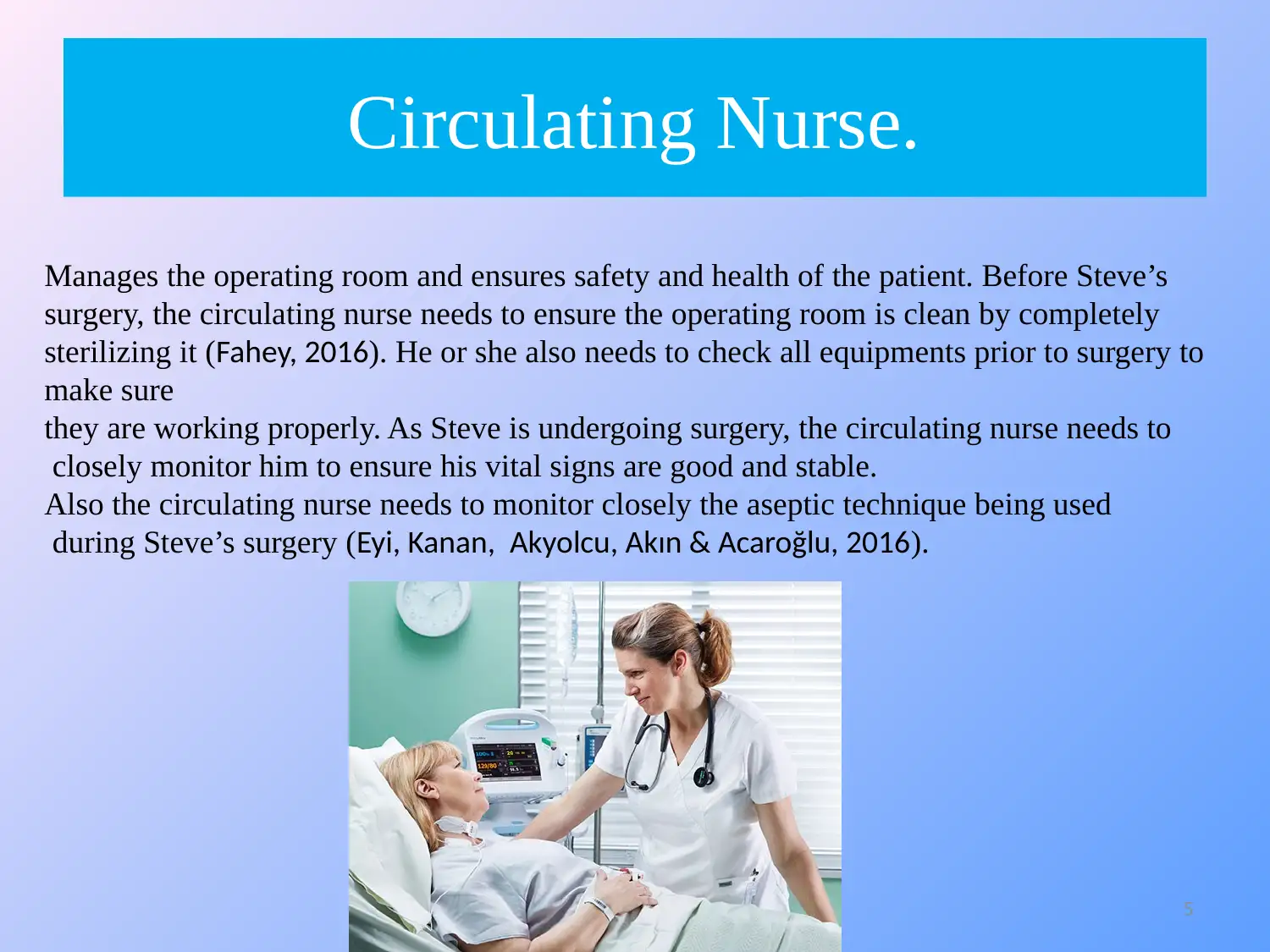
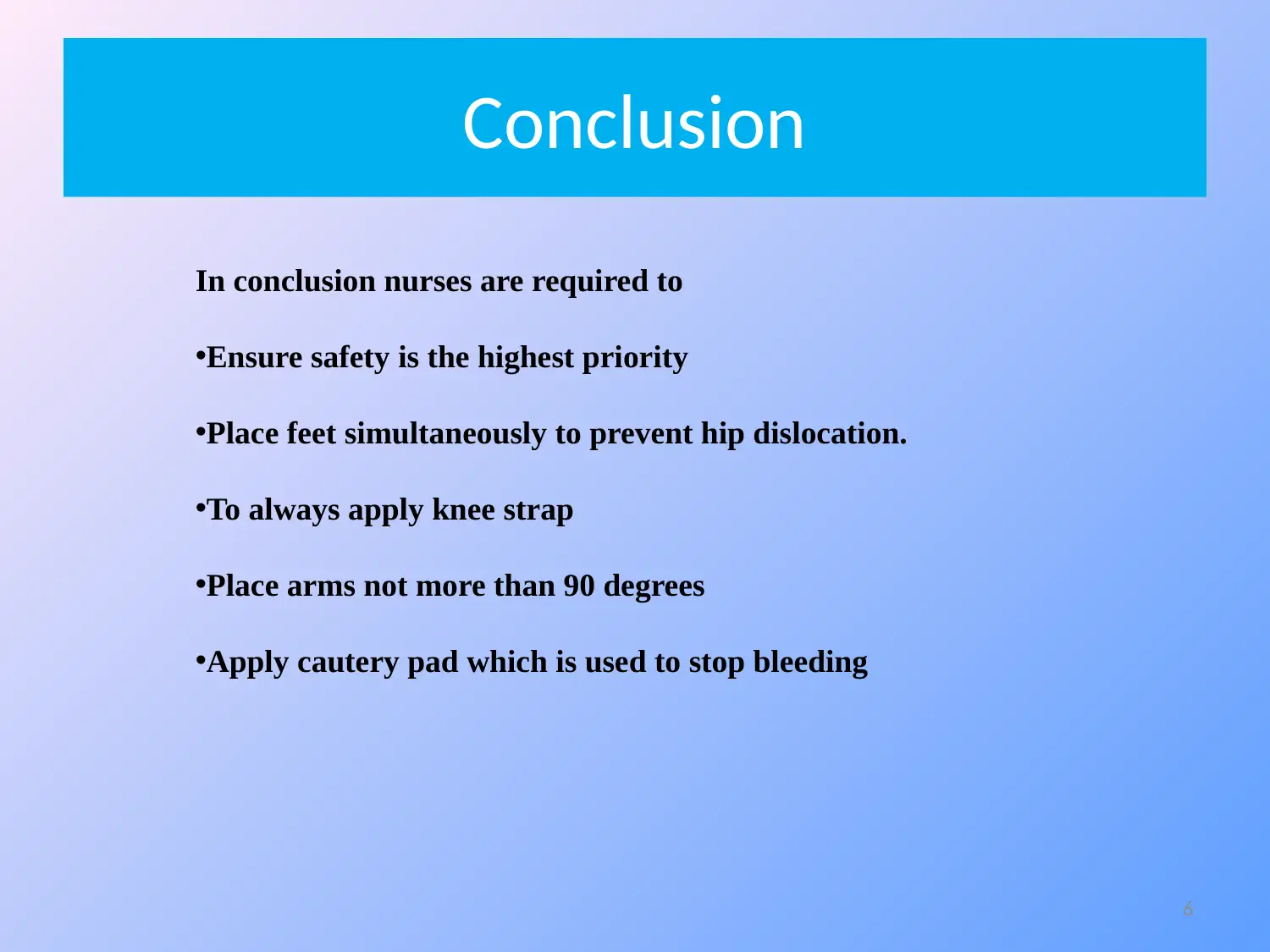
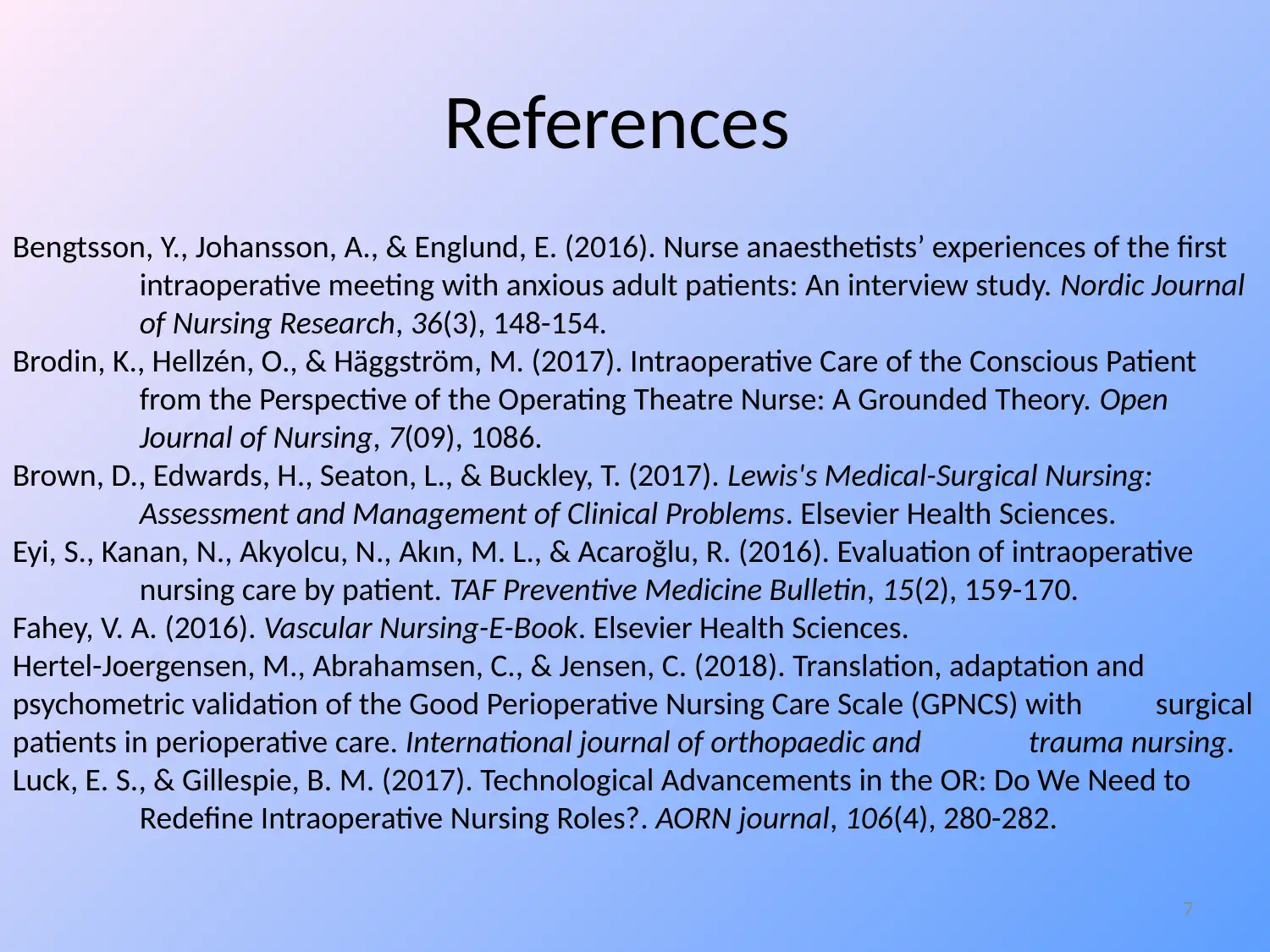





![[object Object]](/_next/static/media/star-bottom.7253800d.svg)